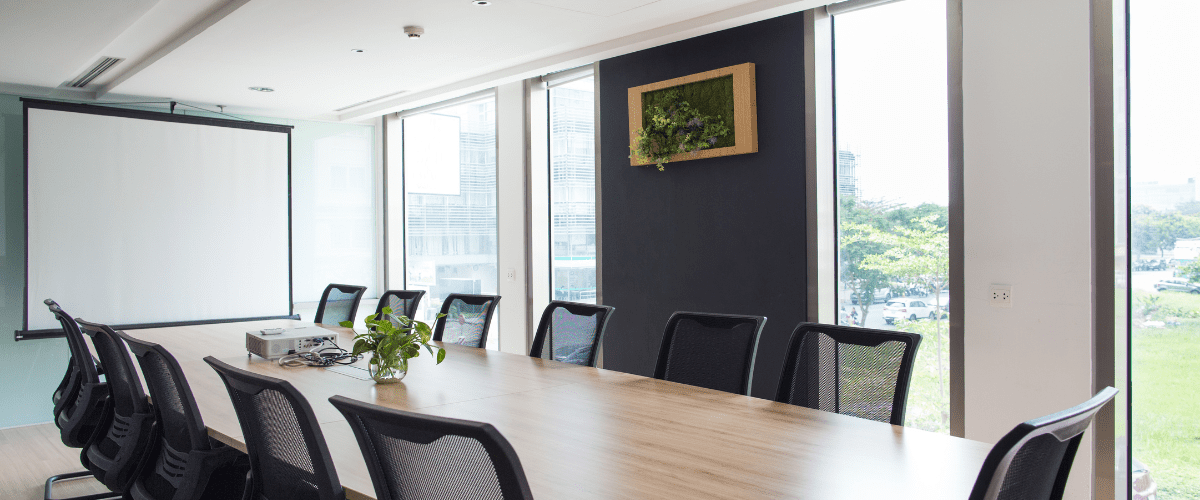Introduction
The hybrid work model has been a game changer in the new working dynamics. Gone are the pre-pandemic days of conventional practices of 5- 6 days a week in the office and having dedicated desks (it’s more about hot desking now), cubicles, and cabins that demanded relevant floor plans and significant finances for upkeep. The new flexible work arrangement requires employees to come to the office for a limited number of days each week and use different desk spaces on various days.
As Hybrid mode gains widespread acceptance as the new norm, the emphasis is on blending flexibility, collaboration, and productivity to ensure the best possible workplace experience without incurring excessive costs. This shift in focus has become a key consideration globally among the leading enterprises across the market.
Turning this concept into a tangible reality, Hot Desking emerges as a premier solution and stands at the core of contemporary workplace administration frameworks. It amplifies team productivity, enables flexible seating arrangements, and optimizes space utilization through its streamlined management.
Want to know more about Hot Desking? Wondering about its compatibility with your workplace management structure? Fret not, we have provided a comprehensive explanation of the following questions:
What Is Hot Desking?

Hot Desking is a workplace arrangement that does not revolve around permanently assigned workstations or cubicles for individual employees. Instead, it embraces a dynamic office layout where employees have the flexibility to choose different desk spaces on different days. This means that on a beautiful, breezy day, you can occupy a desk by the window without any concerns about taking someone else’s designated spot!
Why Is It Called Hot Desking?
Now, you may be wondering about the genesis of the term “Hot Desking”. Well, it harkens back to a naval practice known as “Hot Racking” or “Hot Bunking” where sailors working in different shifts would share the same sleeping bunk due to limited availability.
While Hot Desking has long been a practice among freelancers and consultants in co-working spaces, it has gained significant attention, particularly in traditional office setups, especially after the COVID-19 pandemic.
How Does Hot Desking Work?
According to a recent BCG survey, 7% of office-based employees work full-time in the office, 8% work fully remotely, and remarkably significant 85% employees revealed that their organizations have embraced hybrid work, involving varied office attendance like alternating weekly or set days each week.
This survey reinforces the idea that the Flexible Work Model is on the brink of becoming the dominant standard, and it solidifies the permanence of the Hybrid Work approach. This marks Hot Desking as an ideal solution for companies seeking to reduce space and infrastructure expenses. By strategically scheduling the working days and hours of different functional teams, organizations can ensure effective collaboration without the need for all their employees to be in the office, hence improving work-life balance.
Benefits Of Hot Desking In Hybrid Work
The advantages of Hot Desking in a hybrid work setting are numerous, benefiting both employees and employers both. Here is a rundown of the benefits it offers:

- Employee Satisfaction: Hot Desking arrangements foster employee satisfaction because they offer the freedom to choose a seat each day, without the obligation to work from a particular desk or cubicle.
- Enhanced Space Utilization: By optimizing office space through a reduced number of designated desks on the floor plan, Hot Desking improves space utilization.
- Cost Reduction: Decreased space requirements translate into savings on space acquisition, maintenance, and related amenities.
- Improved Team Collaboration: Functional teams can collaborate more effectively within flexible seating systems, facilitating productive discussions and fostering stronger in-person connections.
- Enhanced Employee Relationships: In a Hot Desking system, employees who might not otherwise interact or share common projects can work alongside each other. This could result in the development of new connections, stronger team relationships, or enhancements in existing employee bonds.
- Increased Productivity through Change : The daily change in seating location provides a fresh working environment, which can boost productivity. Permanent seating arrangements can become monotonous over time.
- Efficient Management of Hybrid Work Models: Hot Desking plays a vital role in streamlining the Hybrid Work Model. On days when certain employees work remotely, desk space is not wasted but utilized by those present in the office, and vice versa.
- Workplace Cleanliness: With no fixed seating assignments, employees do not leave personal belongings at their desks, ensuring a consistently clean workspace. Additionally, due to limited available desk space, cleaning and maintenance become more manageable and cost-effective.
Challenges Faced In Hot Desking
While Hot Desking offers a range of advantages, it also presents several challenges that companies need to consider before implementing it:
Finding an available seat each day can become a tedious task for employees, especially if their preferred spots are already occupied on a first-come-first-served basis. Consequently, some employees may not always view Hot Desking as a particularly convenient work arrangement.
Additionally, there is the possibility that members of functional teams may not have the opportunity to sit and work together due to the limited availability of seats. This could potentially impact their ability to work as productively and efficiently as expected under the new working arrangement.
How To Improve Hot Desking Experience?
Having the right tools for Desk Booking and Meeting Room Booking can be instrumental in overcoming the challenges that may impede the implementation of Hot Desking.
What is Desk Booking?
Desk Booking involves reserving an open office desk in advance, just like booking a seat in a movie theater or flight. This practice alleviates the daily hassle of searching for a suitable workspace in flexible seating environments.
How can Desk Booking and Hot Desking complement each other?
Desk booking can be viewed as enhancing Hot Desking and simplifying flexible work arrangements for employees. While Desk Booking is not inherently exclusive to a hot desk model, they complement each other effectively. Having the option to reserve a desk in advance makes it significantly smoother to implement flexible seating arrangements. Additionally, teams working together can reserve desks alongside their colleagues, maximizing the benefits of Hot Desking in the workplace.
Numerous tools and software solutions are available in the market, such as DB Spazio, which is a comprehensive hybrid workplace experience platform that offers desk and meeting room bookings, workplace collaboration, space planning and optimization, and workplace experience analytics. With an all-in-one solution addressing various hybrid work needs, organizations can seamlessly manage flexible working systems with hot desks to enhance productivity and workplace efficiency to the fullest.
Conclusion
In the rapidly changing landscape of work, Hot Desking stands as a dynamic solution. It empowers employees with flexibility, fosters collaboration, and optimizes workspace use.
As we move forward into this new era of work, remember that the office is no longer defined by a static desk, but by the limitless possibilities of a flexible, adaptable, and dynamic workspace. Embrace booking hot desks, and you will be taking a giant leap toward maximizing flexibility in the exciting world of hybrid work.




